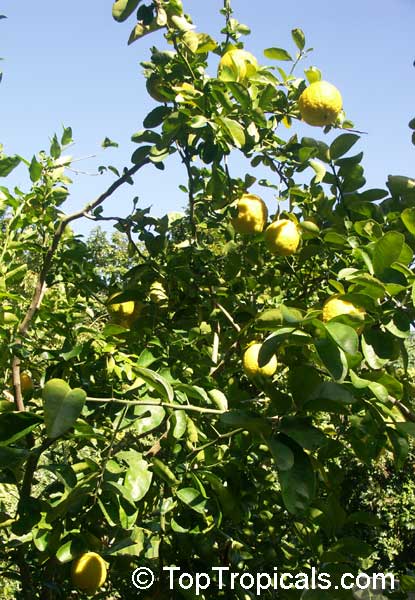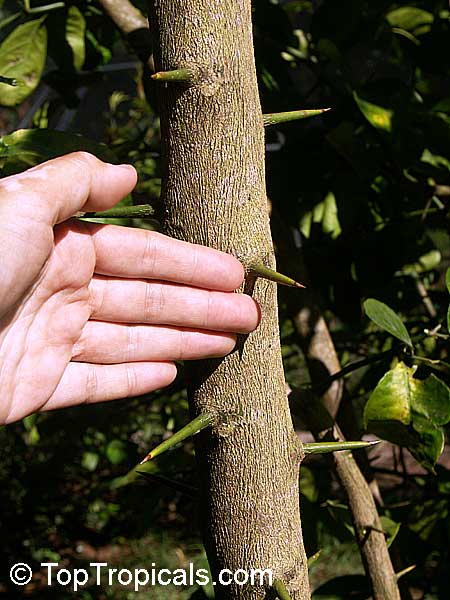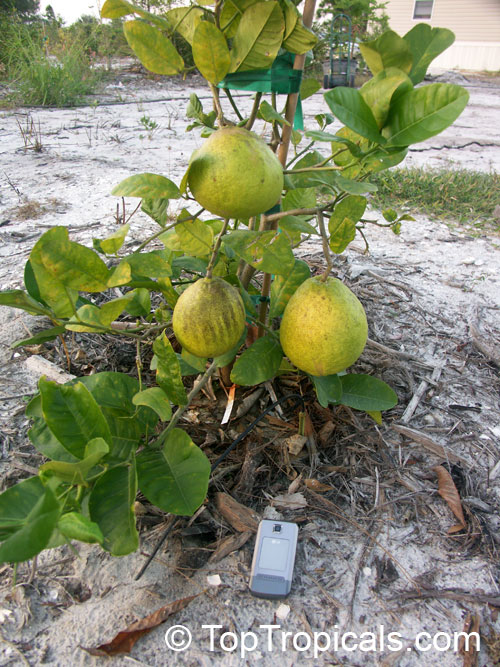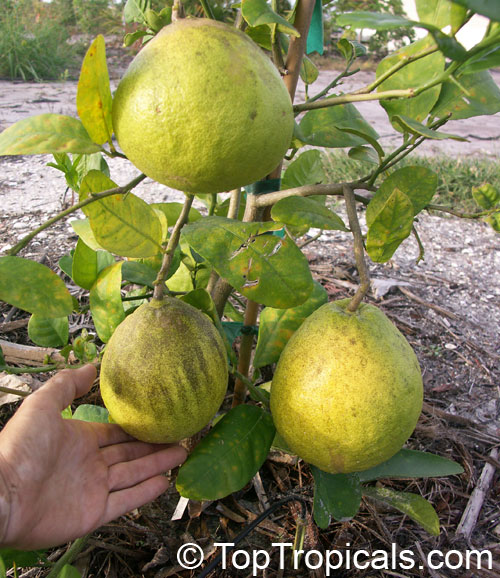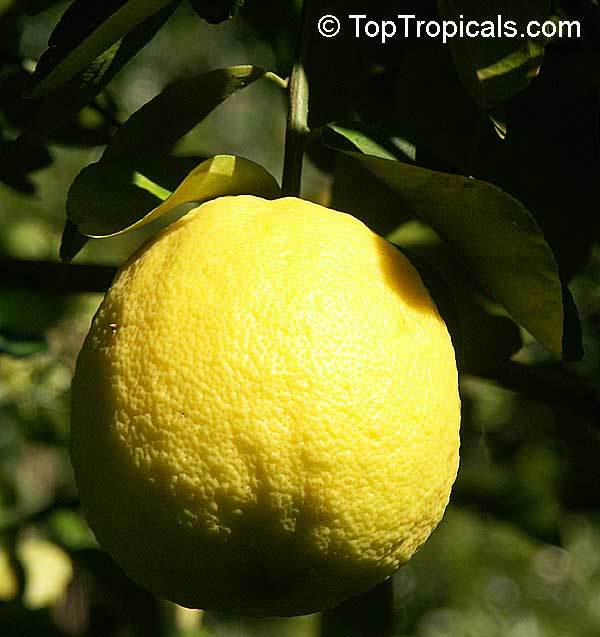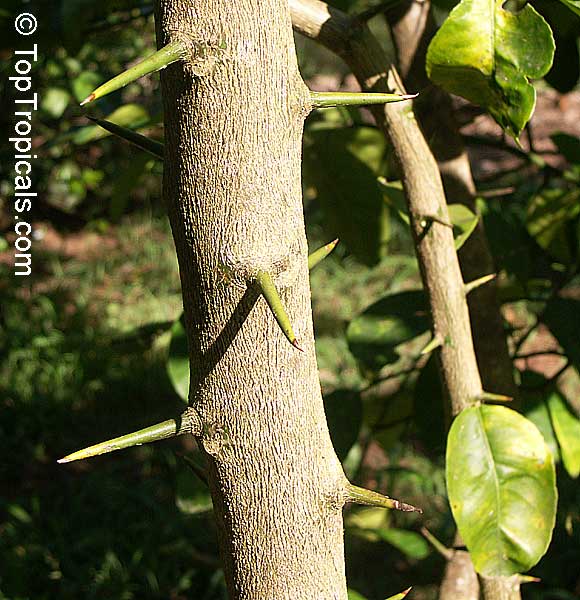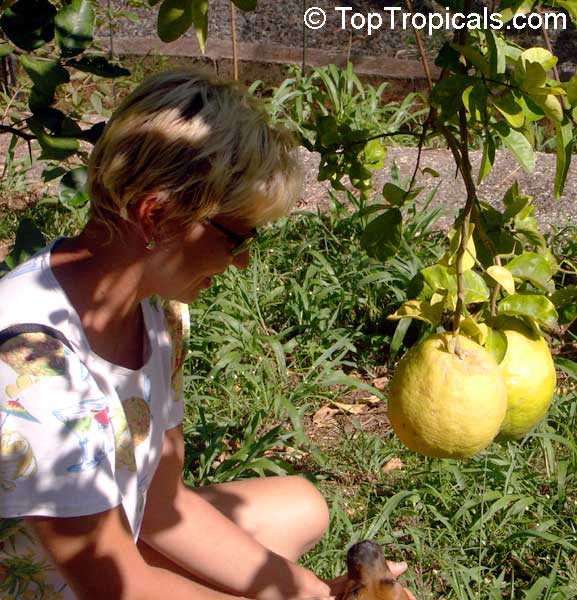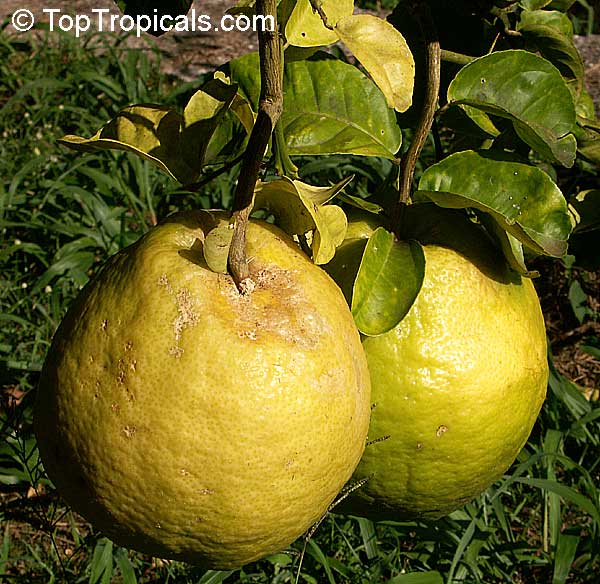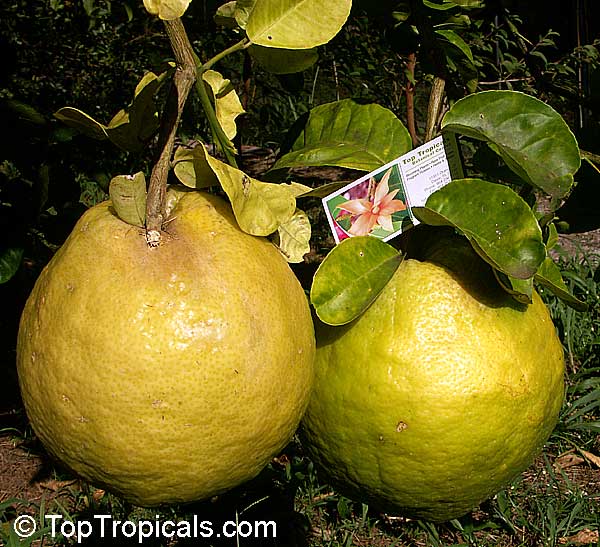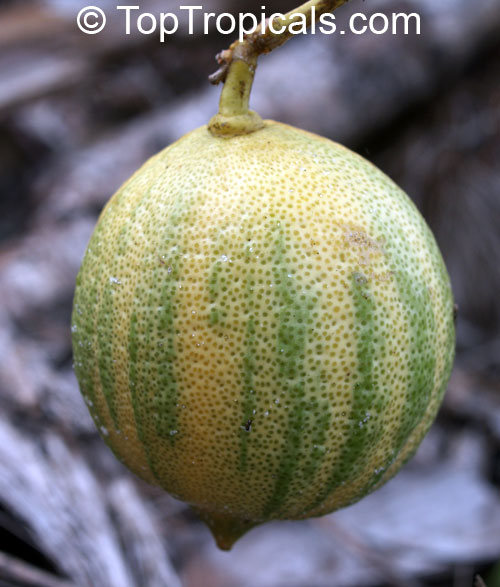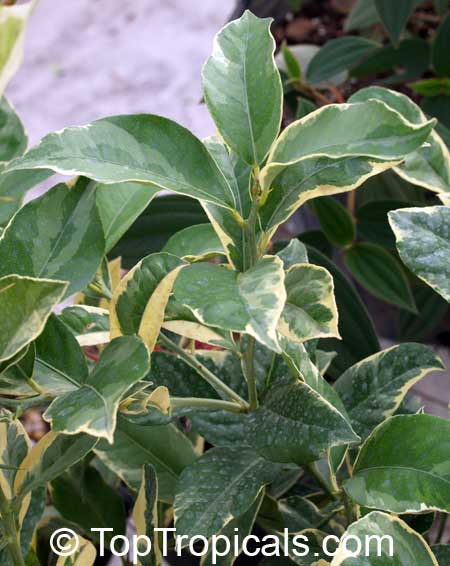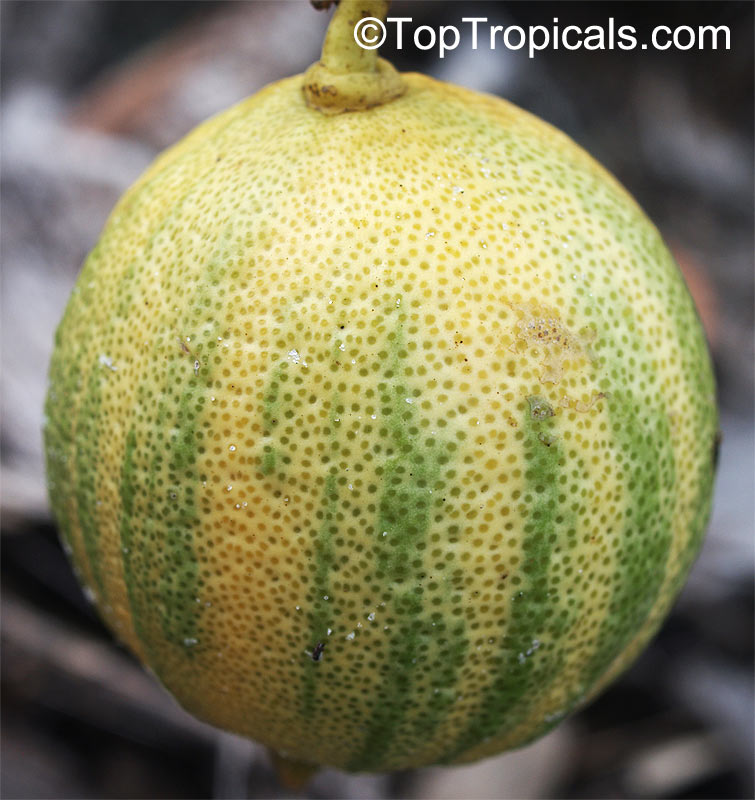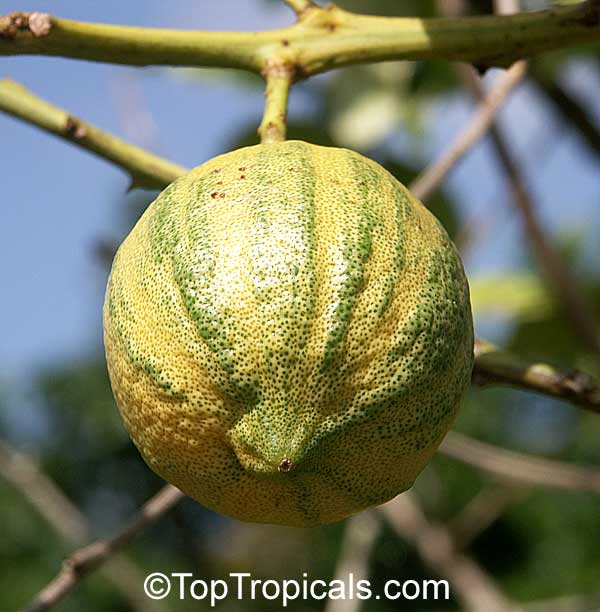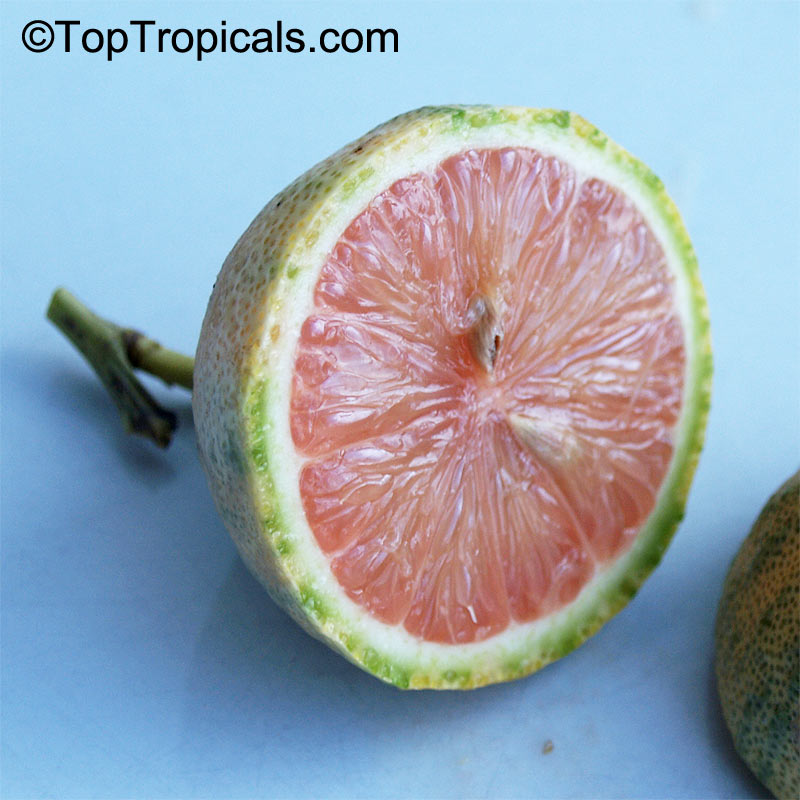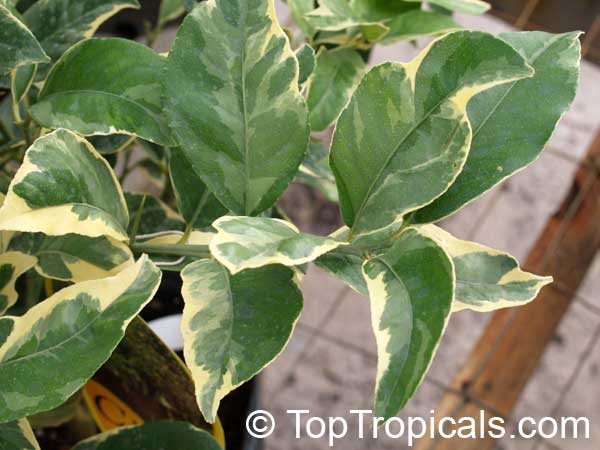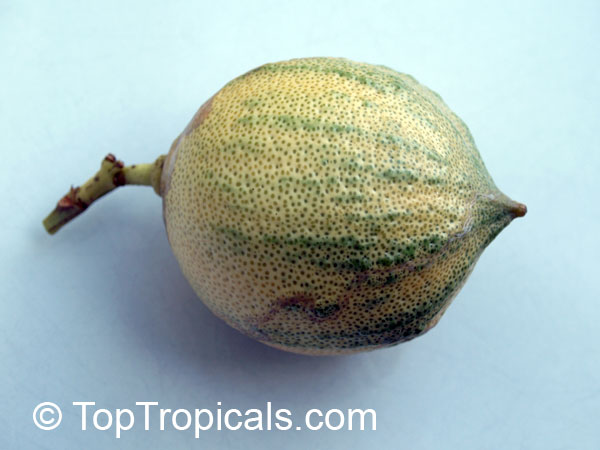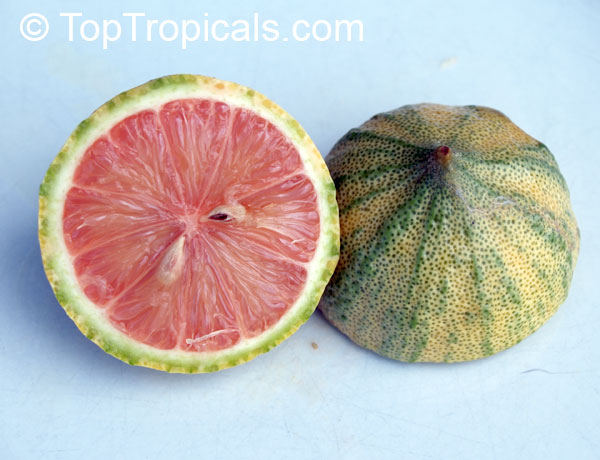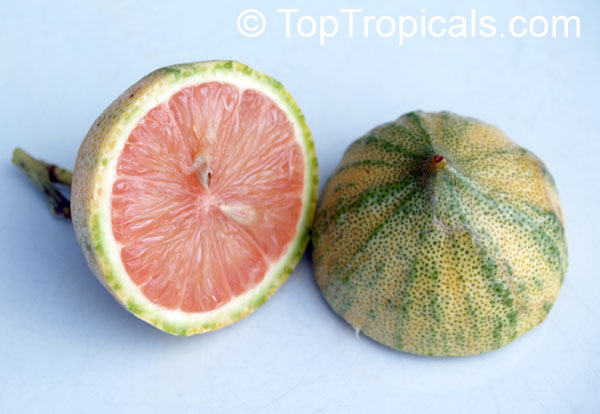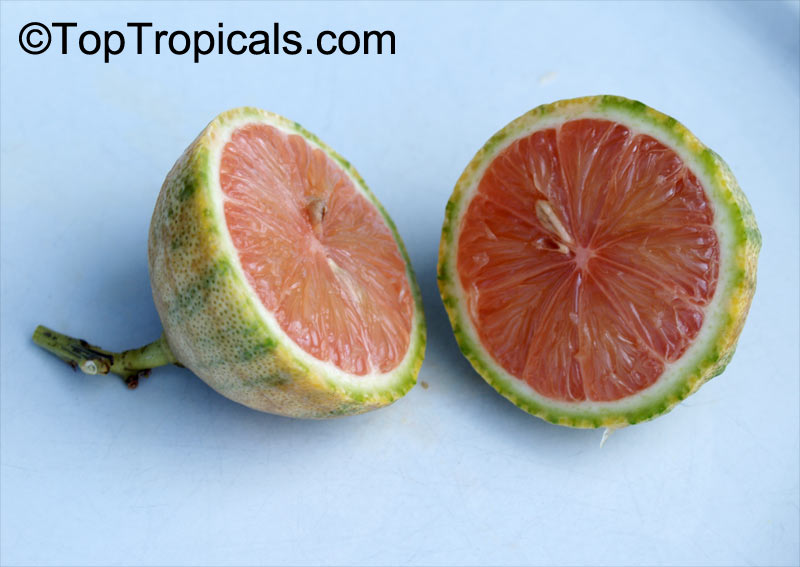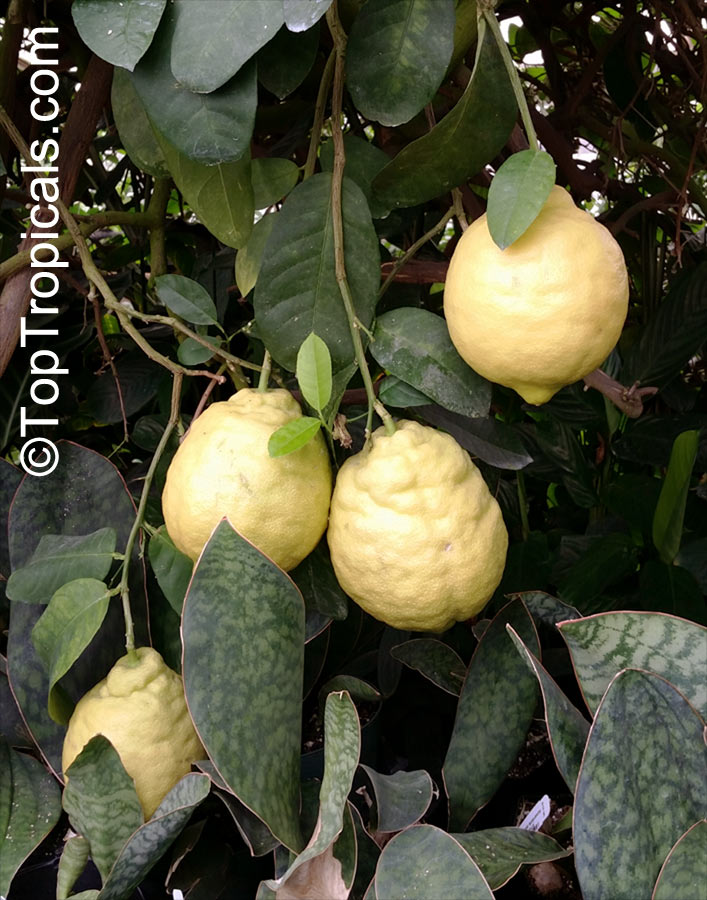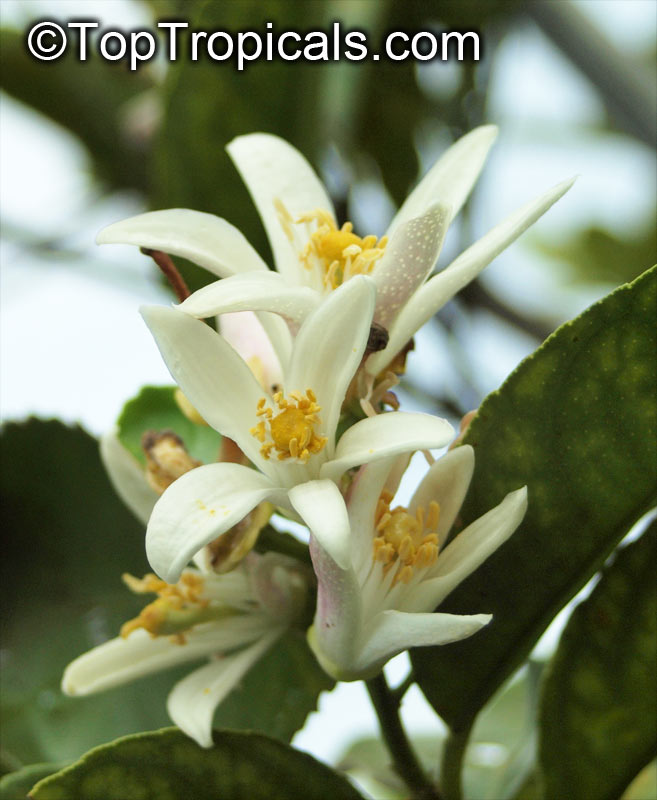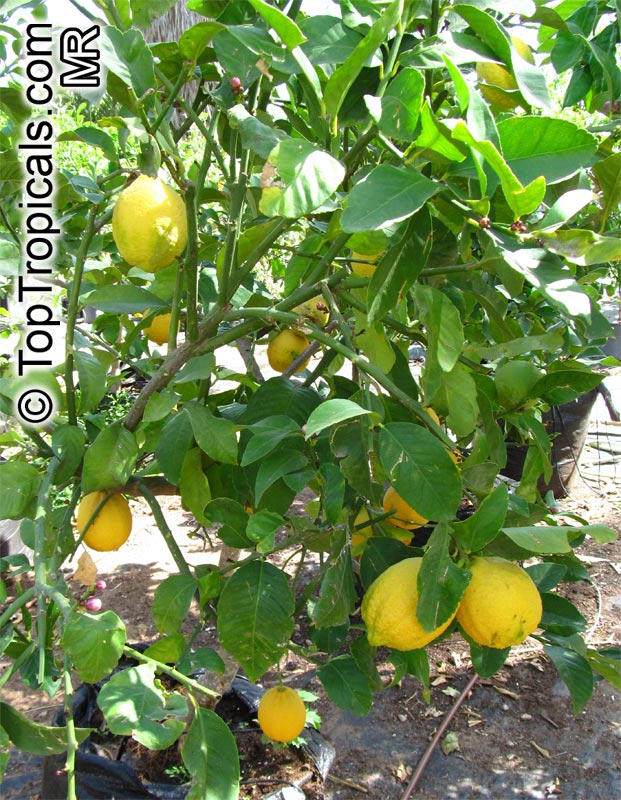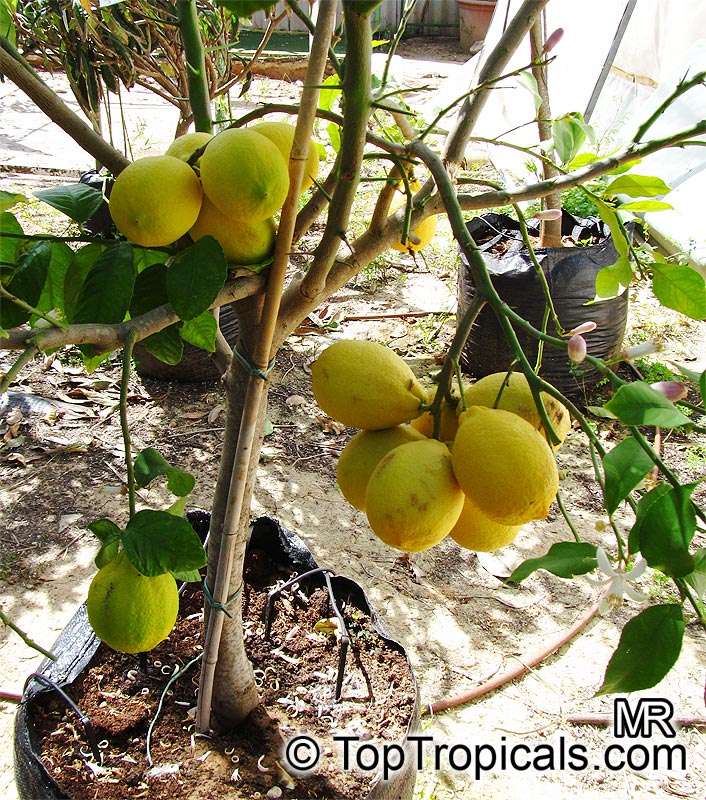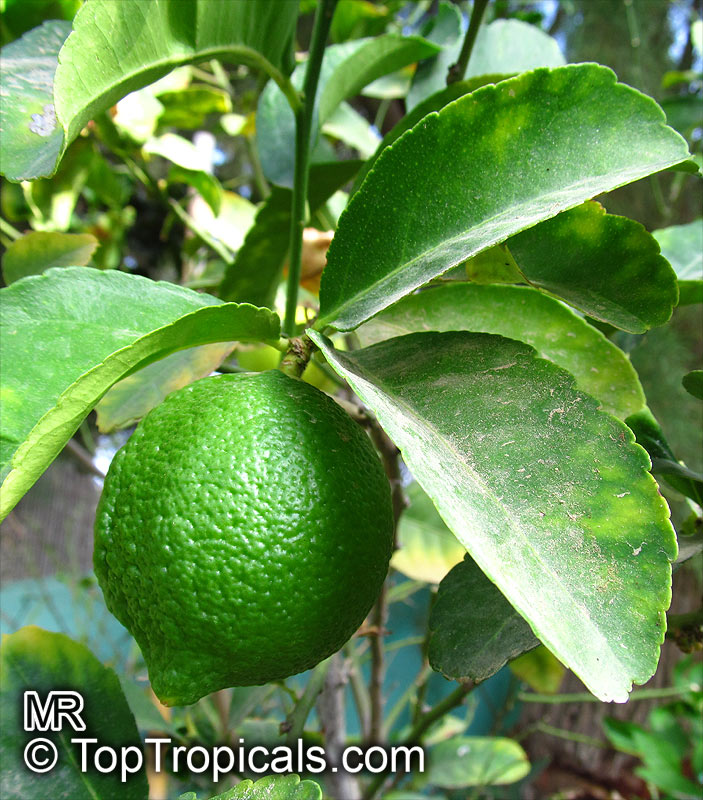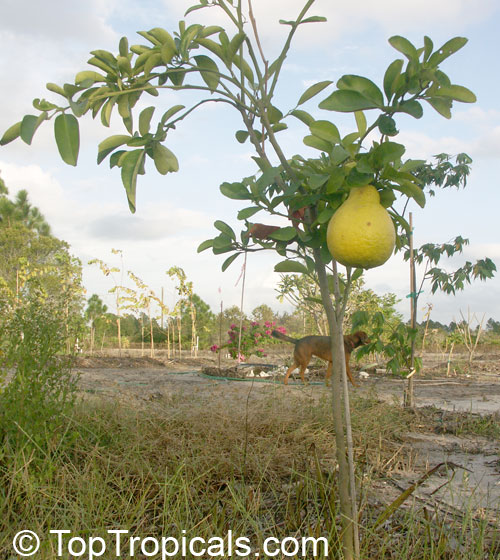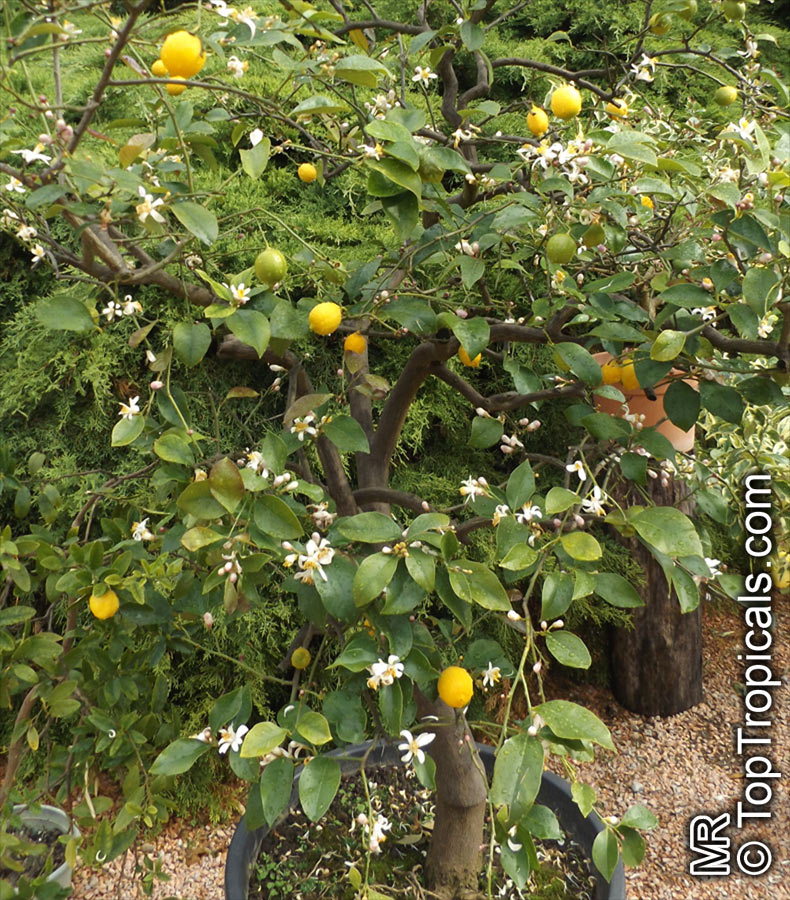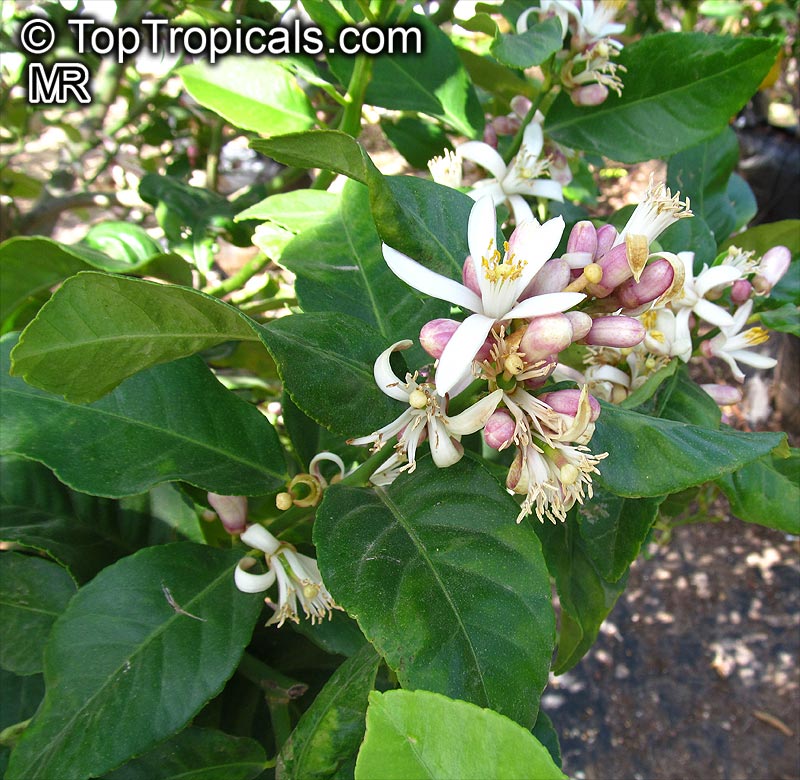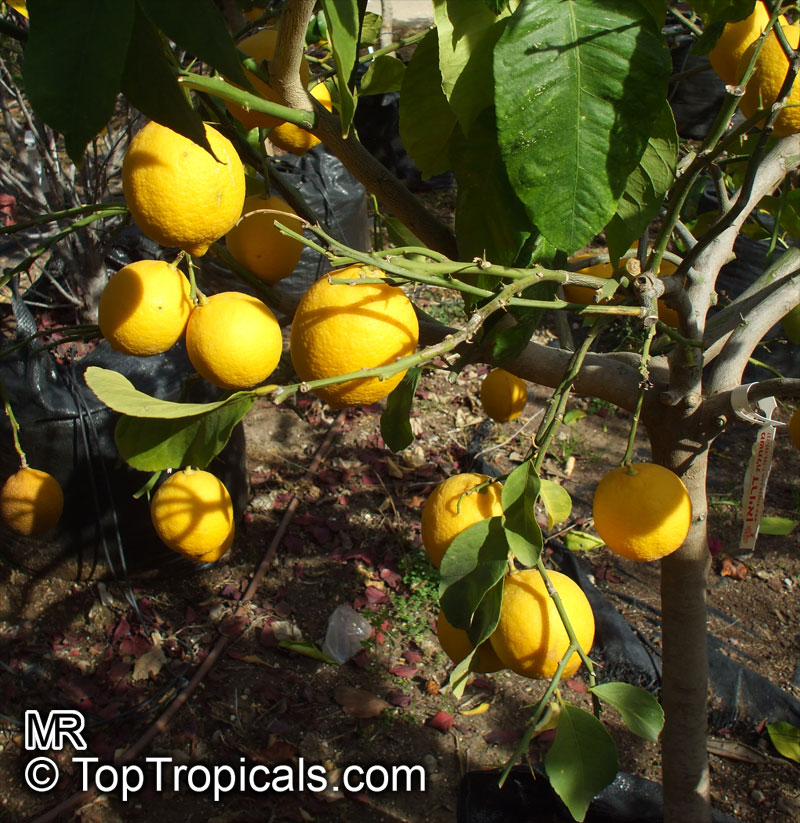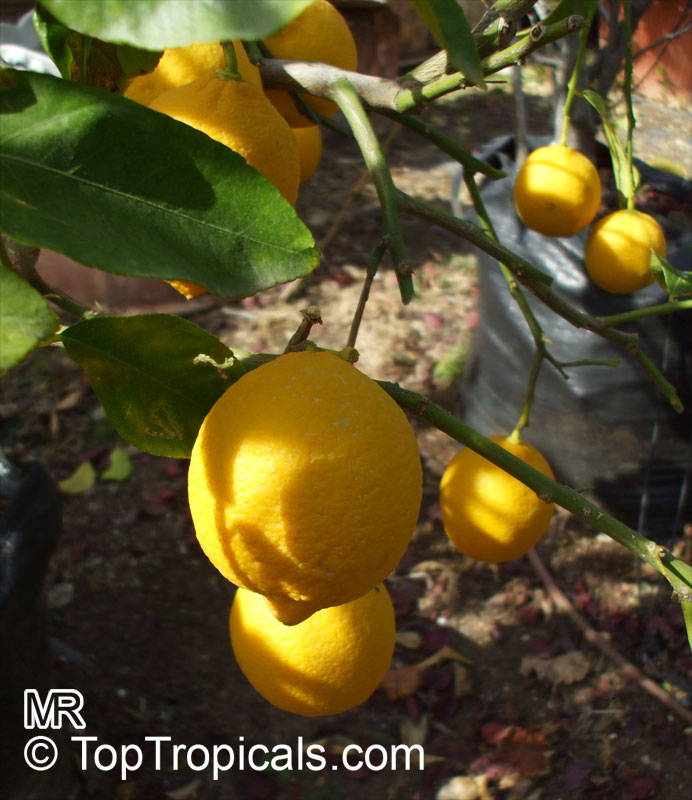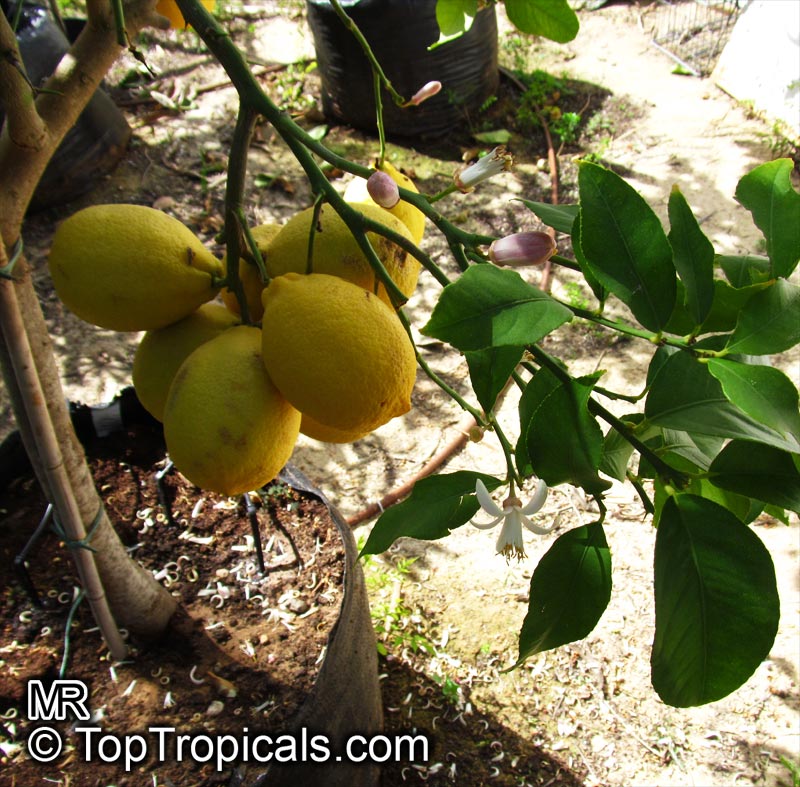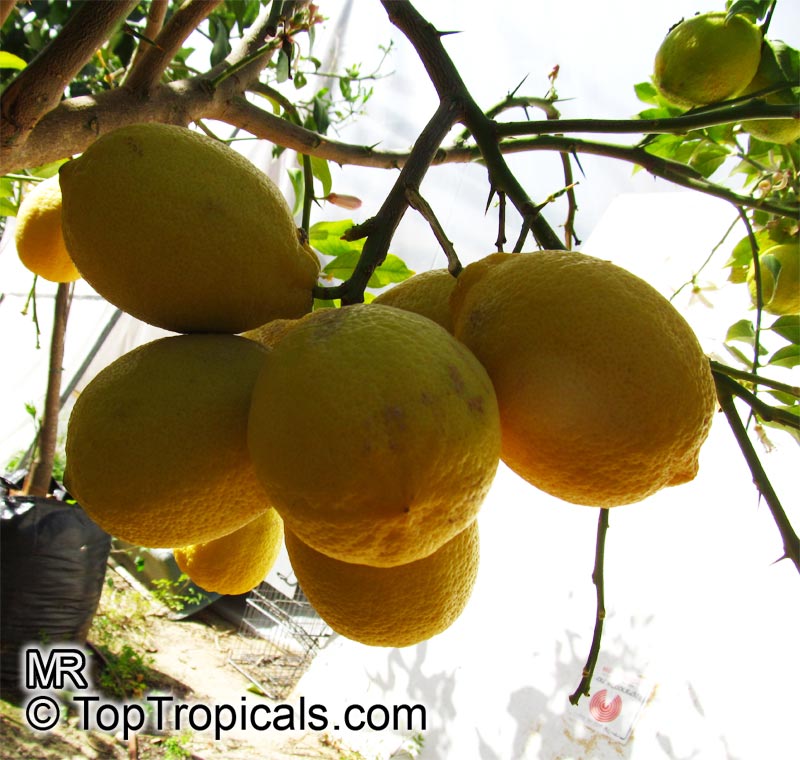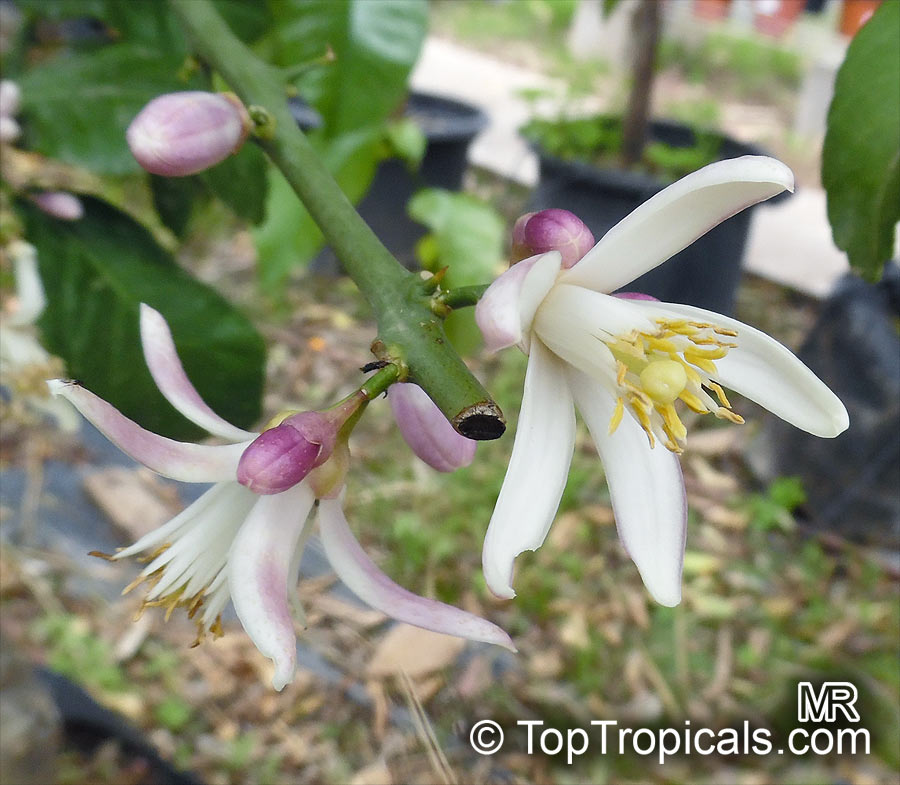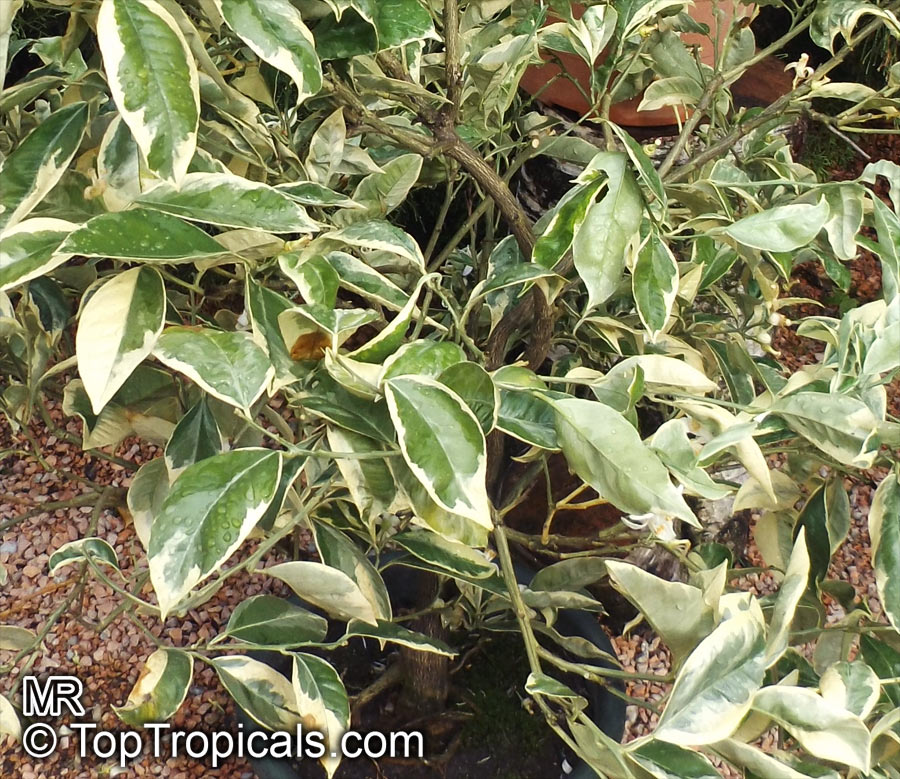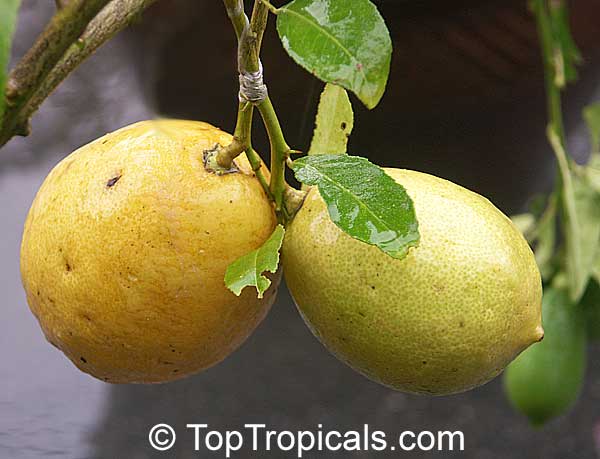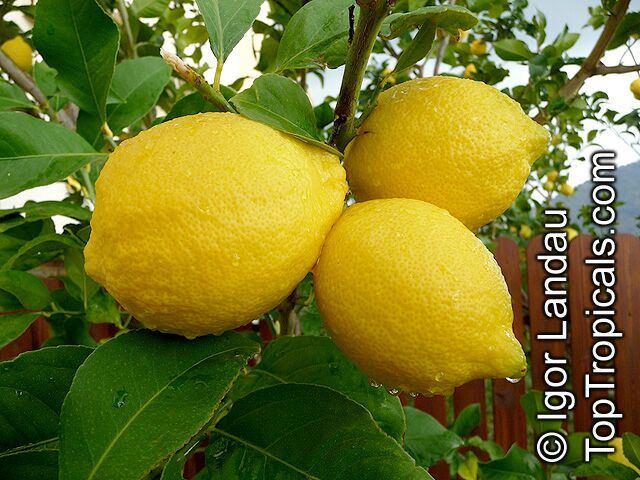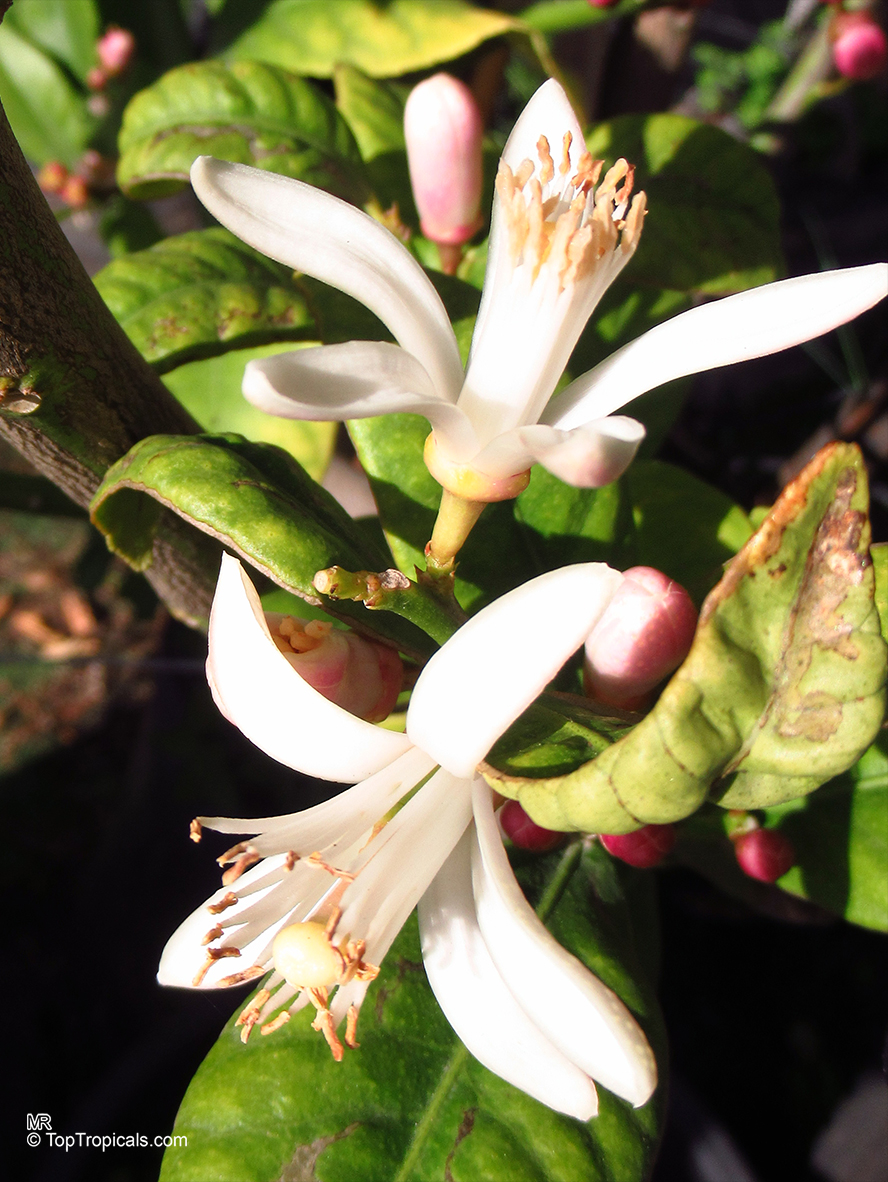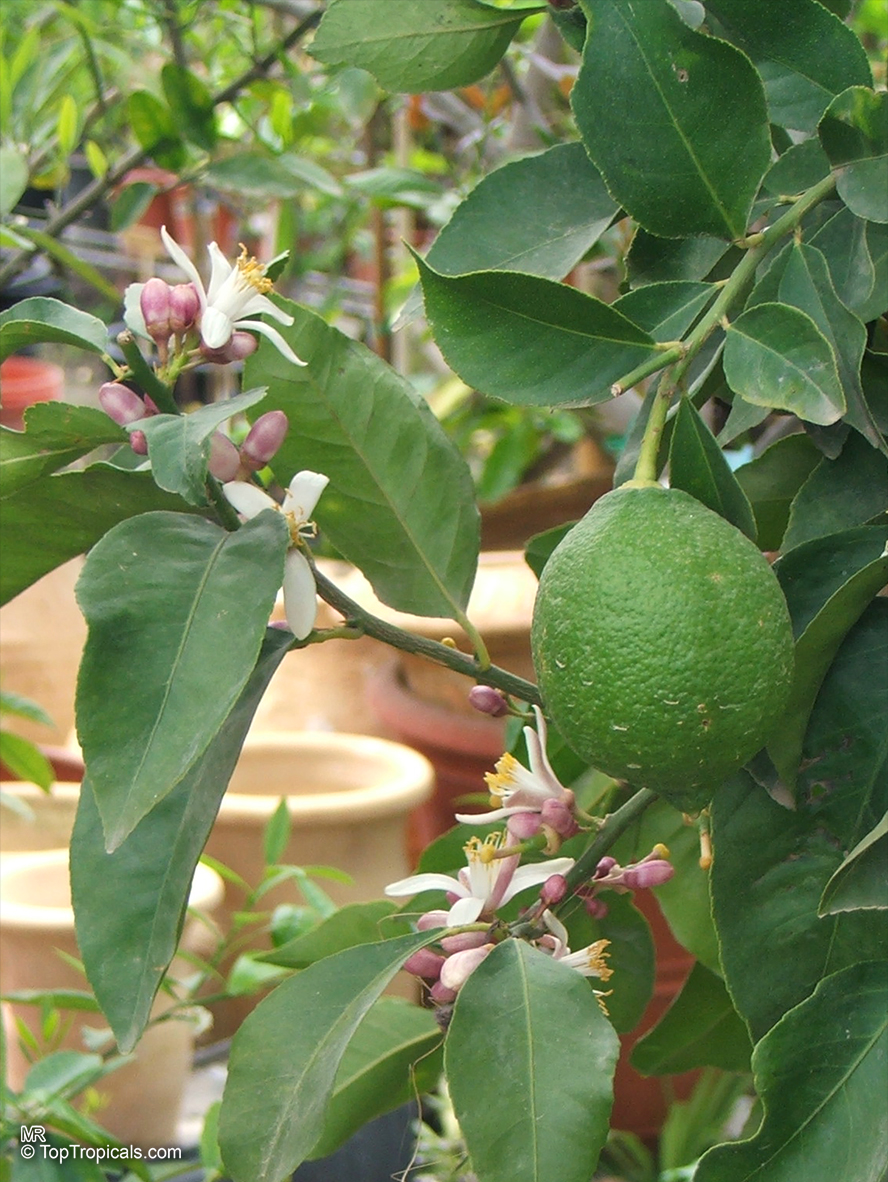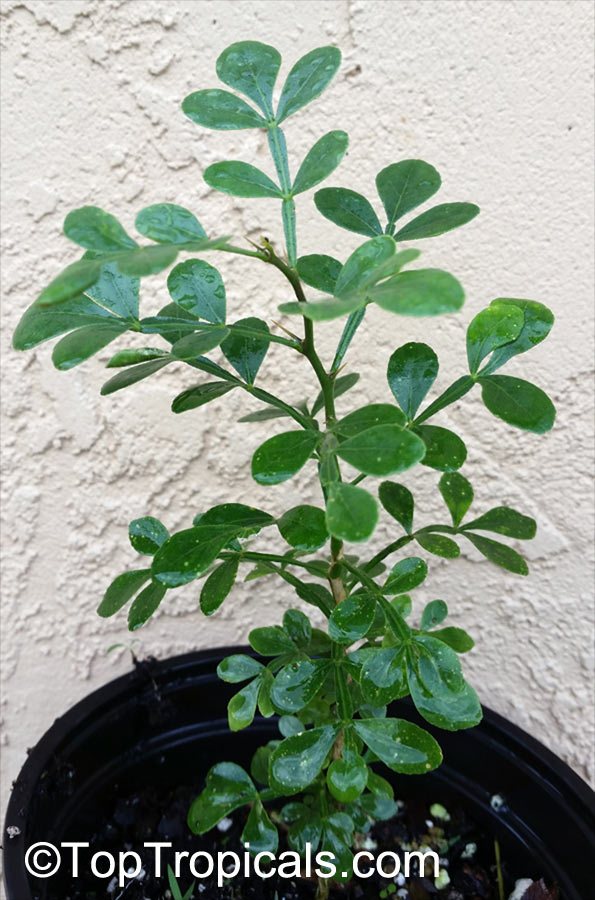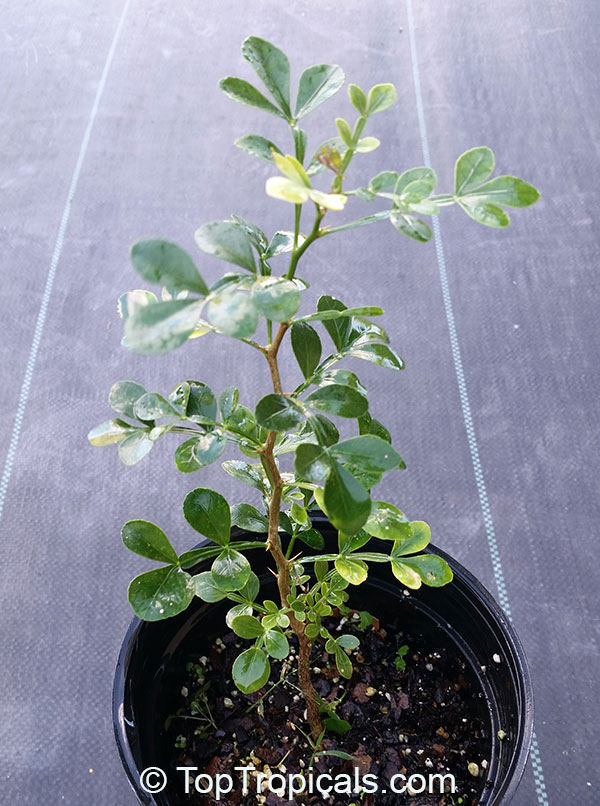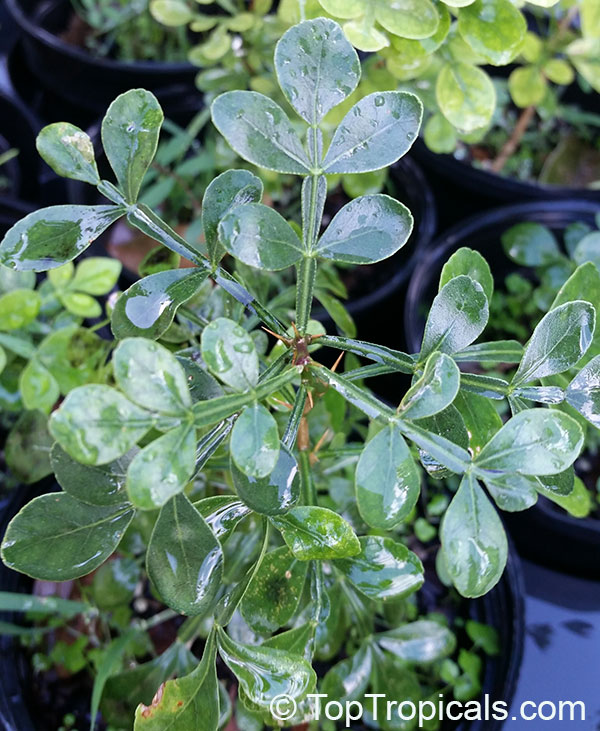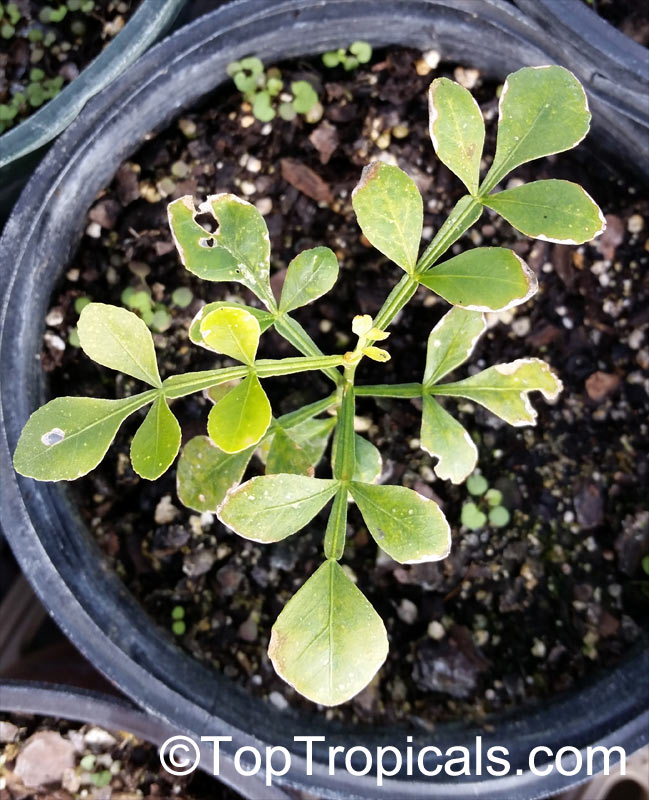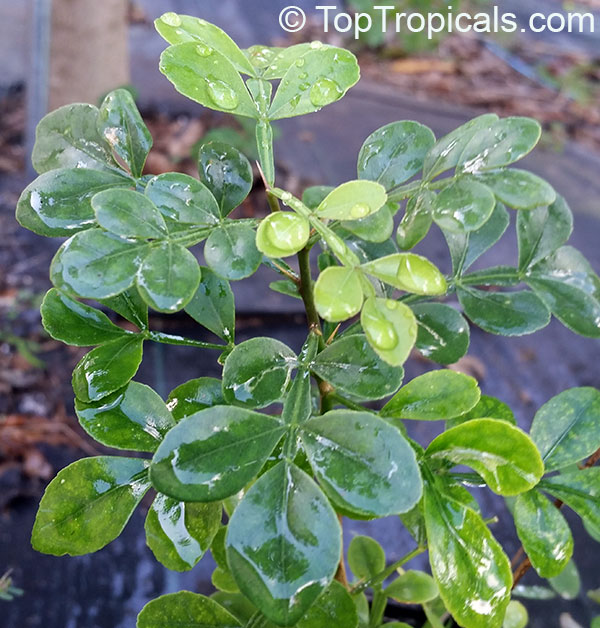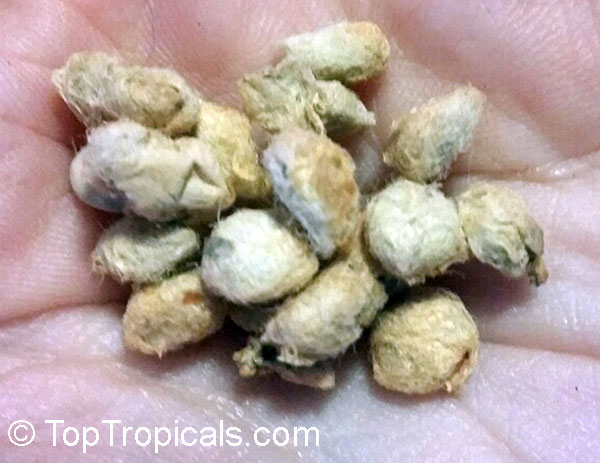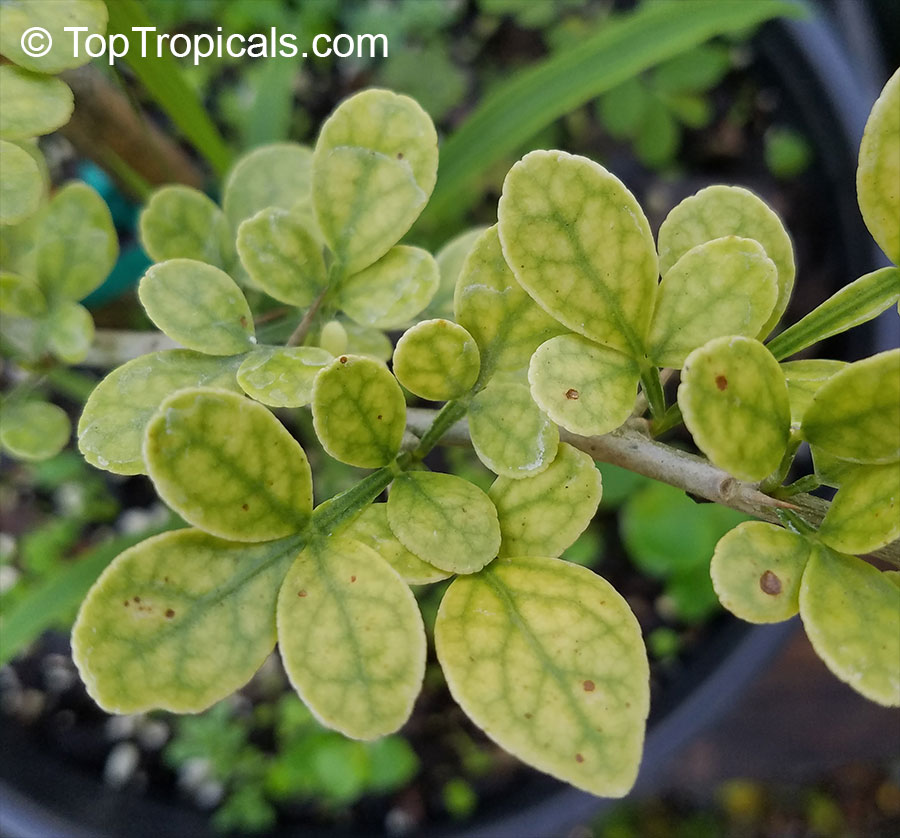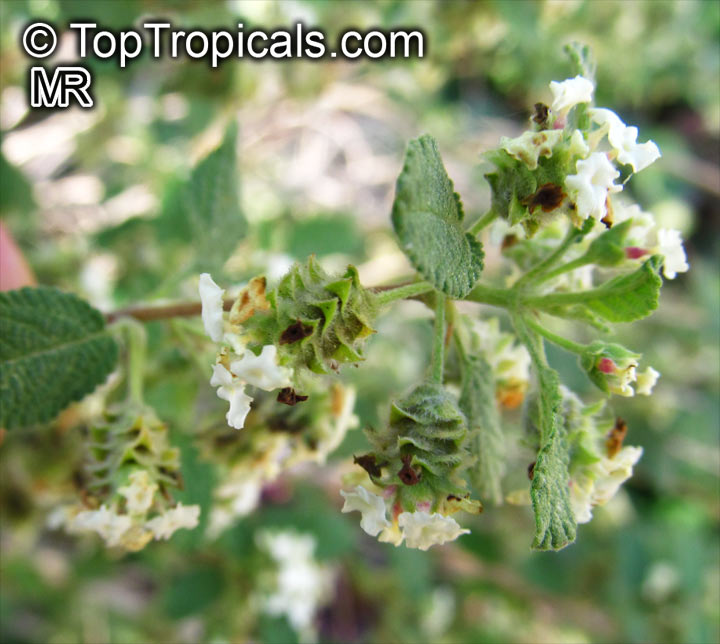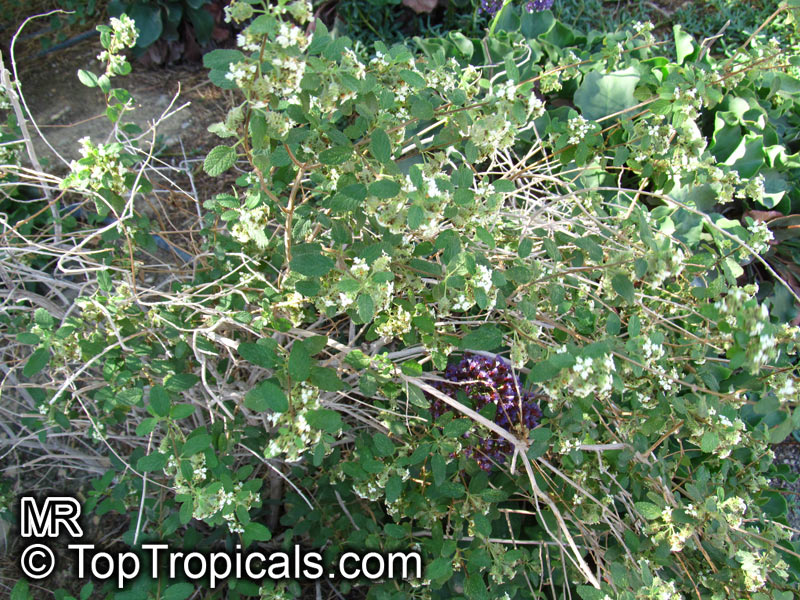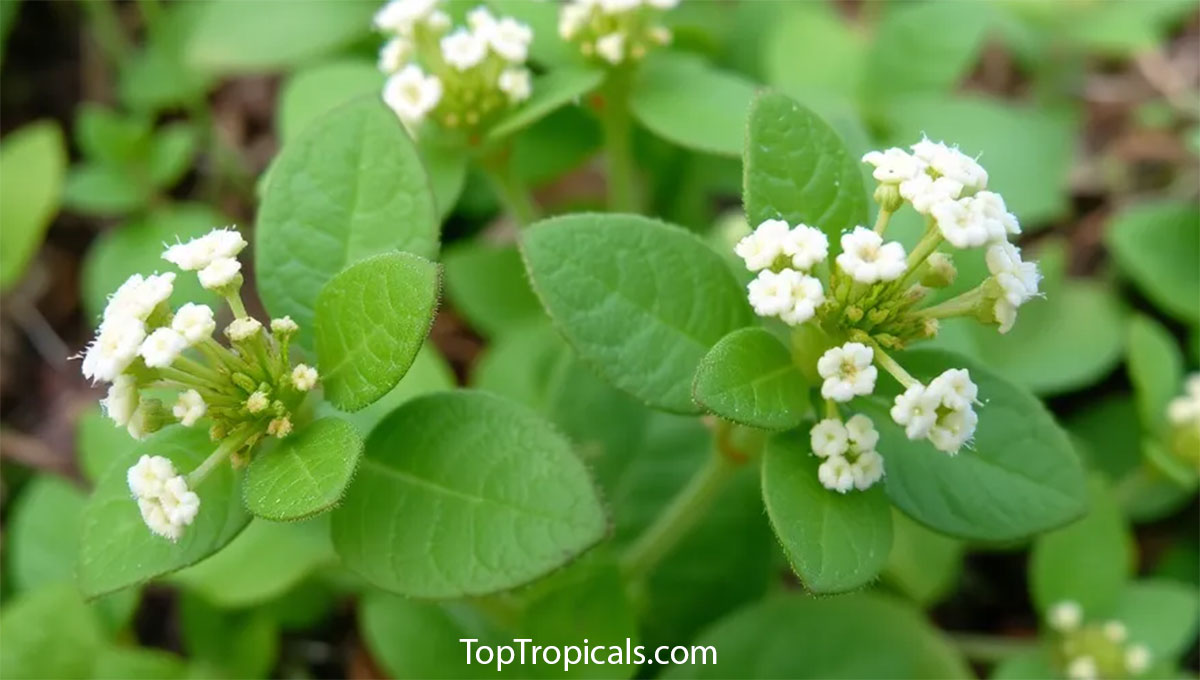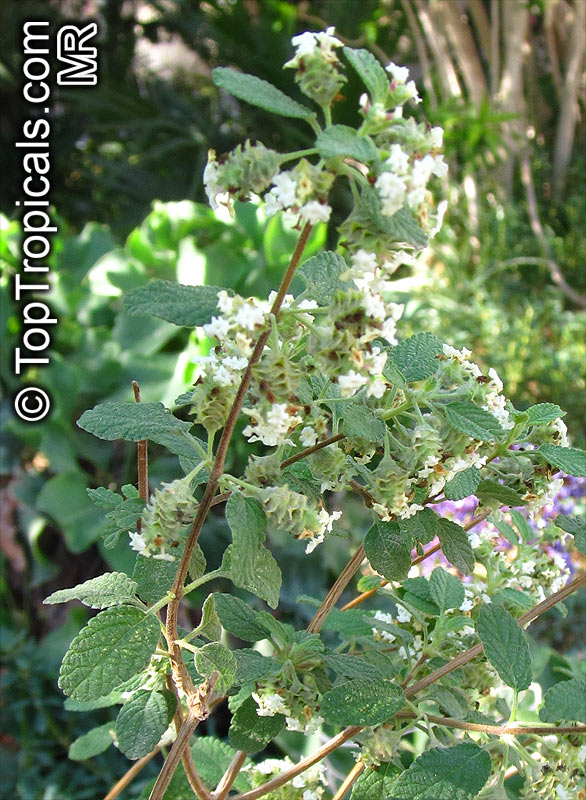Citrus, limon - Search results
| Number of plants found: 5 |
Botanical name: Citrus limon
Common names: Giant Lemon, Ponderosa Lemon, Wonder Lemon
Cultivar: Ponderosa
Family: Rutaceae








Small to medium sized tree, usually to 10-25ft high. Trees are somewhat sensitive to freezes and grow best in areas having only limited frosts and freezes. The Ponderosa Lemon tends to be slightly less hardy than other lemon varieties. Grows in conditions suitable for the average citrus, water frequently except during cold months. Fertilize 2-4 times per year. Can be container grown and was historically a common lemon grown indoors in temperate climates.
Very large, bumpy skinned lemon usually weighing 2-4 pounds. Flavor is typical lemon-like.
Propagation: Commonly by grafting cuttings to various citrus rootstocks. Can also be propagated by seed which usually come true, or fairly close to their parent.
Botanical name: Citrus limon
Common name: Pink Lemonade Lemon
Cultivar: Pink
Family: Rutaceae










Citrus limon Pink (Pink Lemonade Lemon) is an ornamental and edible everbearing tree. Growing up to 10-20 feet tall, it is an attractive tree with purple-tipped new shoots growing from the top. The tree can thrive in full sun or semi-shade and requires moderate water. White to off-white colored flowers blossom every spring, attracting butterflies and hummingbirds to the garden.
These blooms are followed by the edible fruit. The fruits are usually green with yellow stripes, but have a pink interior, a delightful surprise for those enjoying them. They have a higher sugar content than regular lemons, making them perfect for drinks, desserts and lemonade. In addition to being flavorful and fragrant, the fruit is also rich in nutrients and has been used in traditional ethnomedical treatments.
Citrus limon Pink is a hardy tree. It can be grown in USDA Zones 9-11, though with extreme care it can be grown in colder regions in containers or movable pots. Here, the tree must be brought indoors or sheltered in winter and provided with plenty of light and water during the growing season. When grown outdoors the lemon tree should be provided with an organic-rich soil, watered regularly and pruned when necessary.
Because of its high vitamin C content, health benefits of Citrus limon Pink include boosting the immune system. Other nutrients found in the fruit also aid in digestion, energy production and bone health. Its versatile flavor can also be used in cooking to bring out the flavors of fish, poultry, and vegetables.
Citrus limon Pink is an attractive, fragrant tree that is easy to care for and produces delicious, nutritious fruit. With its hardy nature, it can be grown in many climates, and its beautiful flowers and delicious fruits will reward your efforts with beauty and flavor.
Botanical name: Citrus limon
Common name: Lemon
Family: Rutaceae
Origin: Northwestern India









Citrus limon, native to Northwestern India, is a large shrub or small tree, 5-10 feet tall, in full sun with regular water. The white or off-white flowers are fragrant, and the mature plant is cold hardy to temperatures at least as low as the 30s F for a brief period. Citrus limon is grown best in USDA Hardiness Zones 9-11.
It is an ethnomedical plant, used throughout time for many medical properties such as its antiseptic, antispasmodic, and anti-rheumatic qualities. Additionally, lemon is edible and has many culinary uses. The fruit is rich in vitamin C, vitamins B1, B2, B3, B5, B6, E, iron, magnesium, phosphorus, potassium, and fiber.
Citrus limon does best in a pot in colder regions. Potted lemon trees should be kept in an area with the most available sunlight and watered regularly. Plant the lemon tree in rich, well-draining soil in a pot with drainage and ensure that the pot is large enough for a few years of growth. Give it regular fertilizer along with plenty of water during the growing season. Protect the lemon tree from frost to ensure success and when temperatures reach freezing, move the tree indoors or provide frost protection.
Botanical names: Limonia acidissima, Feronia elephantum, Feronia limonia
Common names: Wood Apple, Bel Fruit, Elephant Apple, Monkey Fruit, Curd Fruit, Bela, Billin, Kath
Family: Rutaceae
Origin: Indomalaya








This slow growing tree is native in the Indomalaya ecozone to Bangladesh, India, Pakistan, Sri Lanka, and in Indochinese ecoregion east to Java and the Malesia ecoregion. In some parts of the world, this fruit is called elephant apple because it's a favorite food of elephants, while in other areas, it gets the name wood apple because of its hard wooden shell. It is actually considered sacred by Hindus, and is widely cultivated and eaten in India.
It is erect, with a few upward-reaching branches bending outward near the summit where they are subdivided into slender branchlets drooping at the tips. It has rough, spiny bark. It can be grown in a pot as a small specimen or used as a bonsai. The leaves have a citrus-scent when crushed.
The edible fruit is technically a berry 2-3" in diameter, sweet and sour. It has a very hard rind which can be difficult to crack open, and contains sticky brown pulp and small white seeds. The fruit looks similar in appearance to fruit of Bael (Aegle marmelos).
The pulp can be eaten raw, but it is popularly scooped out and frozen, or made into jam. It can also be mixed with coconut milk for a delicious, health beverage, or frozen into ice cream. The ripe bel fruit is sweet and can also be used for making a tasty drink known as wood apple milk. The ripe fruit is consumed as custard with sugar or honey in certain cultures. The raw bel fruit is sour to taste and is used to make chutney, while the leaves of the bel fruit tree are used as salad ingredients. The vast array of health benefits that are attributed to wood apples are mainly due to their nutrients, vitamins, and organic compounds, including their tannins, calcium, phosphorous, fiber, protein, and iron.
It is a commonly known herb in Indian system of medicine to treat various disorders including diabetes. The fruit pulp extract is used in folk medicine against gastric ulcers.
Bel fruit is great for digestion, and a remedy for digestive disorders. The trunk and branches of bel trees contain a gum-like substance called Feronia Gum. Bel leaves contain tannin, which is known to reduce inflammation, and has antifungal and antiparisitic activities.
Bel fruit juice mixed with warm water and sugar is used for blood purification and the removal of toxins. It is effective for ear aches. High level of vitamin C in Bel fruit increases the strength and potency of the immune system.
The Feronia gum, contained in the trunk and branches of the bel tree, counteracts diabetes by reducing the severity of the condition and helps to manage the flow, secretion, and balance of sugars in the bloodstream. Leaves of the Bel fruit tree supposedly help people avoid chronic or recurring colds and related respiratory conditions. They also help in curing sore throat and treating chronic cough due to its function as an expectorant. The fruit is used as an energy food thanks to its high protein content.
Considering the detoxifying powers of wood apples, the kidney and liver can be protected if the correct organic compounds from wood apples are kept at healthy levels.
Liver Health: As a good source of beta-carotene, wood apples also cure liver problems. They contain thiamine and riboflavin, both of which are known as liver health boosters, this fruit also functions as an ingredient in cardiac tonics.
Botanical names: Lippia turbinata, Lippia alba
Common names: Poleo, Juanilama, Pamporegano, Pitiona
Family: Verbenaceae
Origin: South America
Hardiness: 15°F











This medicinal plant related to Lantana is widely cultivated in Mexico as an ornamental for its aromatic foliage and beautiful flowers. The essential oil composition is unique to each plant, but may include piperitone, geranial, neral, caryophyllene, camphor, eucalyptol, limonene, and many others. The leaves are used for flavoring foods, such as mole sauces from Oaxaca, Mexico. The plant is used medicinally for its somatic, sedative, antidepressant, and analgesic properties.
Leaves and roots are used to make tea or syrup for cough relief and are said to relieve symptoms from anxiety to flatulence and hypertension.
Just brushing past it releases a wave of spicy, citrusy fragrance. It is an herb garden must-have. Fast-growing, drought-tough, flood-friendly, and practically indestructible - it thrives where other plants fail! Whether you re into healing herbs, culinary magic, or just want the best-smelling plant in your garden - this is it.
Use link to repeat this search:
https://toptropicals.com/cgi-bin/garden_catalog/cat.cgi?find=Citrus limon&search_op=and&keyword_op=and&language=e&number=10
&no_change_lang=1&user=tt&sale=1&first=0
